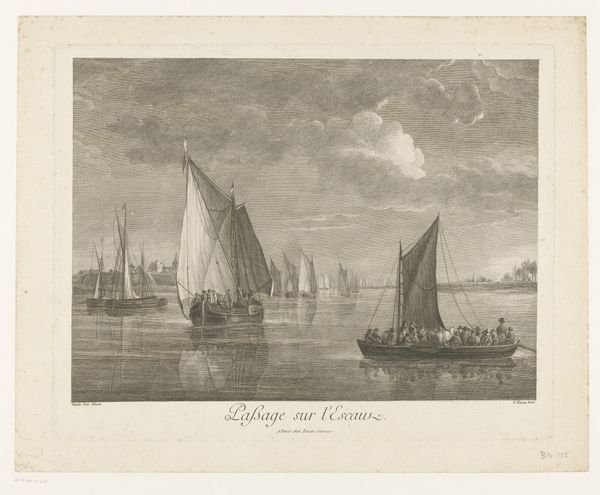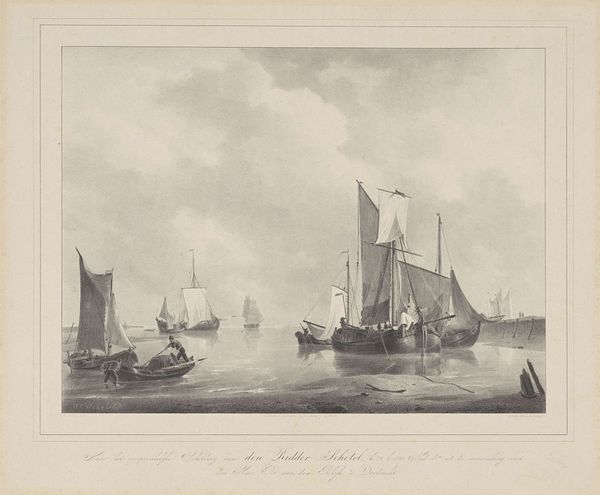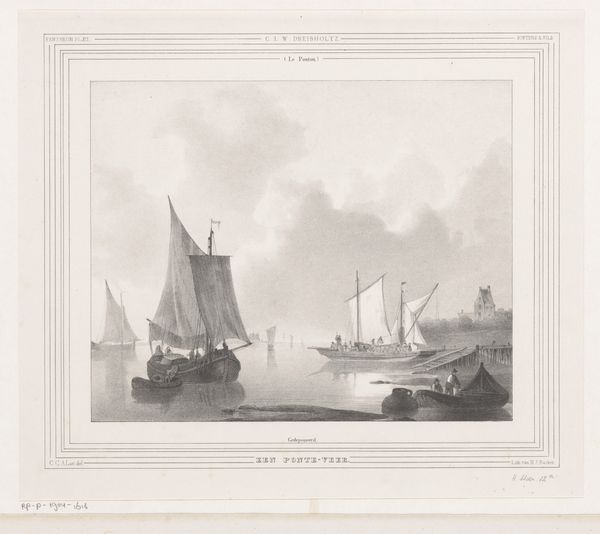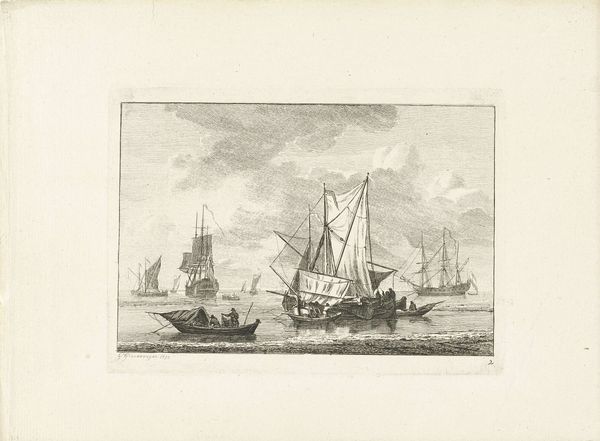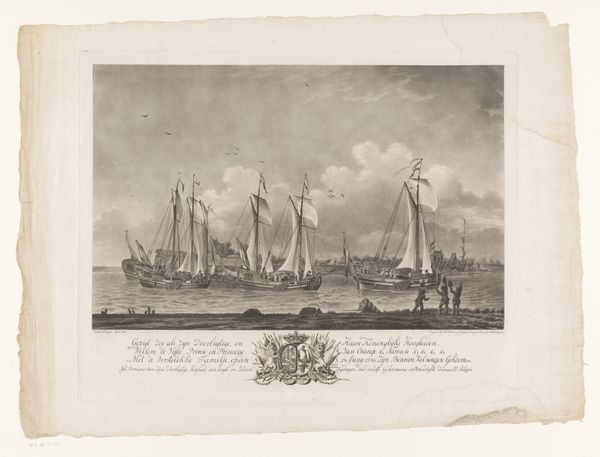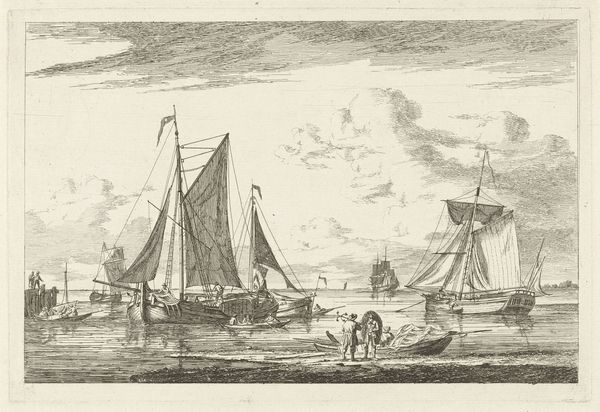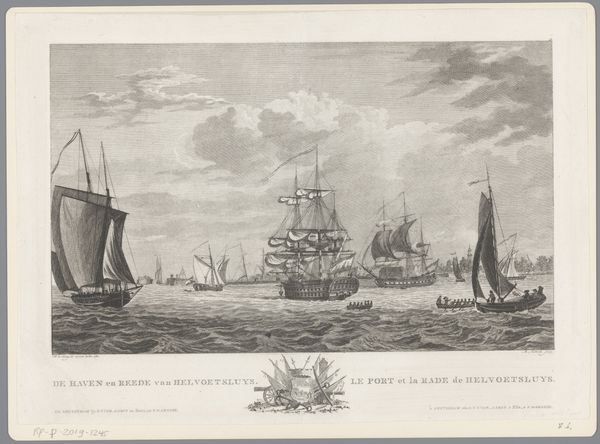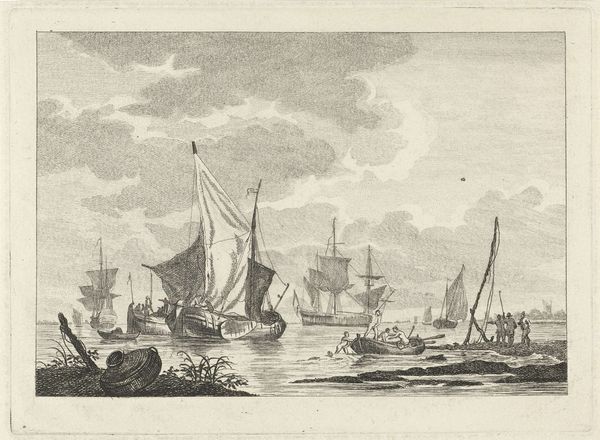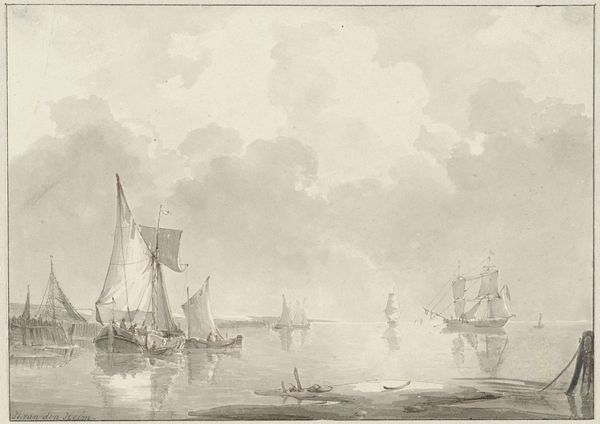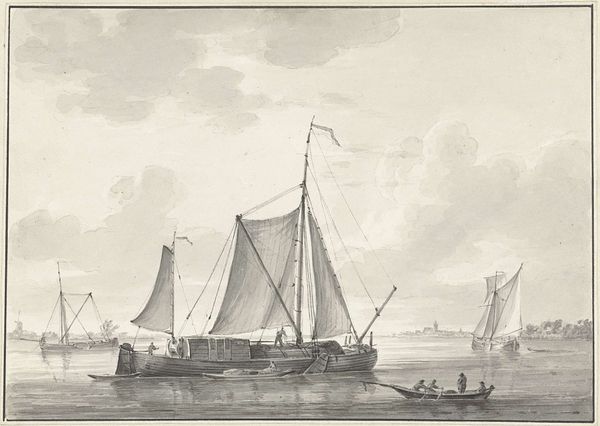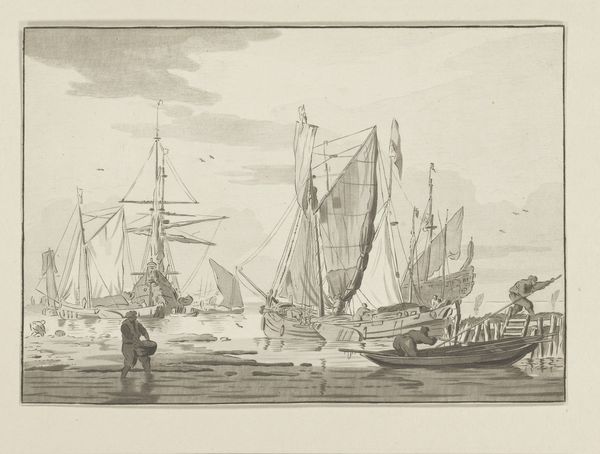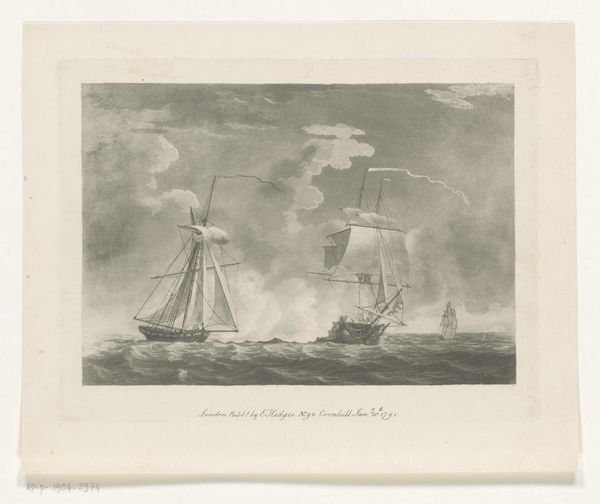
Dimensions: width 266 mm, height 225 mm
Copyright: Rijks Museum: Open Domain
Editor: This is "Rustig water met vissersboten," or "Calm Water with Fishing Boats," by Mathias de Sallieth, dating from sometime between 1764 and 1791. It's an engraving. There's such a sense of stillness. What stands out to you in this print? Curator: I see more than just stillness. Think about the context: the late 18th century. What did maritime settings signify for the Netherlands then? The Dutch Golden Age, built on sea trade, was fading. This image presents a ‘calm’ but also hints at a world reliant on increasingly fragile, racialized and gendered labour systems propped up by maritime exploits. Does the seemingly peaceful surface belie a more complex reality? Editor: So, this seemingly calm scene actually references a time of immense economic and social upheaval? How can a landscape do that? Curator: By subtly highlighting absence. Where are the grand merchant ships that once dominated Dutch seas? Why focus on smaller fishing boats? Is this ‘calm’ a deliberate choice, a visual turning away from the legacy of colonialism and its uncomfortable truths? It raises questions about who benefits from this "calm" and at what cost. Editor: I never would have considered those implications just from looking at the image! It's a powerful perspective. Curator: Art often reflects not just what's present, but what is strategically omitted. It encourages us to look beneath the surface and question dominant narratives. I wonder if this piece serves as a reminder that idyllic scenes may mask deeper, structural inequalities. Editor: This has totally reshaped how I view the artwork. I’m now considering those undercurrents and the political implications in something that appears so serene.
Comments
No comments
Be the first to comment and join the conversation on the ultimate creative platform.
